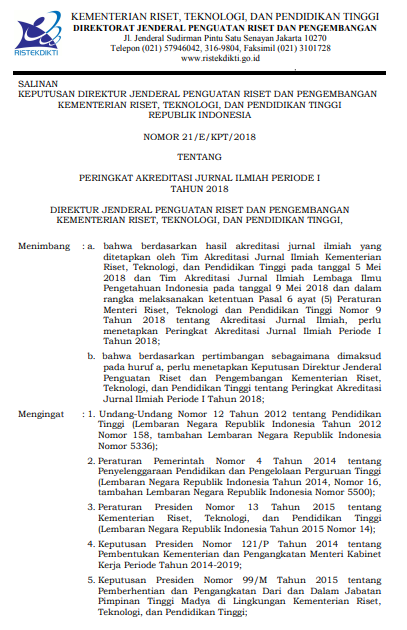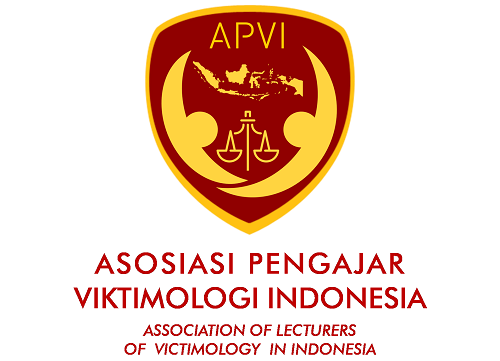LAW AND ETHICS OF COMMUNICATION IN SOCIAL MEDIA
Abstract
Every Environment Has Its Own Laws And Ethics Which Guide Behavior; However, It Does Not Mean That Anybody Is Able To Obey It And It Rises Three Consequences At Legal, Ethic And Social. This Research Is A Quantitative Research With Law In Action Approach, It Is A Non-Doctrinal And Empirical Social Science Study. Internet Brings The World To New Ways Of Thinking, And Communicating. Netiquette Is An Ethical Guide In Behaving / Communicating Among Netizens. Teachers’ Awareness To Communicate Well In Smk Bakti Purwokerto Is At A Poor Level. Bad Habits Communications In Real-World Are Brought Into Cyber Which Often Create Legal Issues. Although No One Has Proceeded To Justice, It Is Quite Worrying Since Their Position As Teachers Should Be Role Models For Their Students. It Is Necessary To Realize The Awareness Of Compliance With The Law And Ethics Of Cyber Communication For These Teachers.
Keywords: Netiquette, Internet, Social Media, Law And Ethics, Communication.
References
Baktiono, Wolly. “Dunia Cyberspace Baudrillardian “The Matrix”. Jurnal Ilmiah SCRIPTURA, Vol. 2 No. 1, January 2008, pp. 8-17
Boyd, D.M. & N. Ellison. “Social Network Sites: Definition, History, and Scholarship”. Journal of Computer-Mediated Communication, 13 (1), 2007, pp. 1-11
Campbell, M. “Cyberbullying: An Old Problem in a New Guise?”. Australian Journal of Guidance and Counseling, Vol. 15 (1), 2005, pp. 68-76
Choirul Anam, M. & Muhammad Hafiz, “Surat Edaran kapolri tentang Penanganan Ujarn Kebencian (Hate Speech) dalam Kerangka Hak Asasi Manusia”, Jurnal Keamanan Nasional, Vol. 1 Number 3, 2015
Damayanti, Maria Nala & Elisabeth Christine Yuwono. “Avatar, Identitas dalam Cyberspace”. Jurnal Desain Komunikasi Visual Nirmana, Vol. 15, Number 1, January 2013, pp. 13-18, DOI: 10.9744/nirmana.15.1.113-18
Davis, R.A.; G.L. Flett & A Besser. “Validation of a New Scale for Measuring Problematic Internet Use: Implication for Pre-Employment Screening”. Cyberpsychology & Behavior, 5 (4), 2002, pp 342-343
Hidayah, Siti. “Antropologi Digital dan Hiperteks: Sebuah Pembahasan Awal”. Jurnal RANAH, Th. II No. 1 April 2012, pp. 2-10
Hindujaa, S. & J. Patchinb. “Cyberbullying: An Exploratory Analysis of Factors Related to Offending and Victimization”. Deviant Behavior, Vol. 29 (2), 2008, pp. 129-156
Katz, J. and R. Rice. 2004. Social Consequences of Internet Use: Access, Involvement and Interaction. Cambridge, Massachusetts: The MIT Press;
Khanisa. “Dilema Kebebasan Dunia Maya: Kajian dari Sudut Pandang Negara”, Widyariset, Vol. 16 Number 1, April 2013
Kraft, E.M. & J. Wang. “Effectiveness of Cyber Bullying Prevention Strategies: A Study of Students Perspective”. International Journal of Cyber Criminology, Vol. 3 (2), 2009, pp 513-535
Marten, Hans. “Evaluating Media Literacy Education: Concepts, Theories and Future Direction”. Journal of Media Literacy Education, Vol. 2 (1), 2010, pp 1-22
Nasrullah, Rulli. “Perudungan Siber (Cyber-Bullying) di Status Facebook Divisi Humas Mabes Polri”. Jurnal Sosioteknologi, Vol. 14 (1), April 2015, pp. 1-11
Nurudin. “Media Sosial Baru dan Munculnya Revolusi Proses Komunikasi”. Jurnal Komunikator, Vol. 4 (2), November 2013, pp. 83-93;
Piliang, Yasraf Amir. “Budaya Teknologi Indonesia: Kendala dan Peluang Masa Depan”. Jurnal Sosioteknologi, 28th Edition Year 12, April 2013, pp. 247-262
Qualman, Erik. 2010. Socialnomics, How Social Media Transforms The Way We Live and Do Business. Burlington: Awareness
Raharjo, Agus. Anarki di Cyberspace (Pandangan Filosofis tentang Kausa Maraknya Cybercrime), Makalah on Konferensi Ke-5 Asosiasi Filsafat Hukum Indonesia, Surakarta, 17-18 November 2015
Raharjo, Agus. Legal Protection for Victims of Religious of Offences on the Internet, Proceedings of International Conference on Victimology and Victims Assistance in Indonesia, Faculty of Law, Universitas Jenderal Soedirman, Purwokerto, 20-22 September 2016
Raharjo, Agus 2016. Anarki di Cyberspace, Bagian Pertama: Filosofi dan Regulasi Cyberspace. Yogyakarta: Genta Publishing
Rosenbaum, J.E., J.W.J. Beentjes & R.P. Konig. “Mapping Media Literacy: Key Concepts and Future Directions”. Communication Yearbook, 32, 2008, pp 313-353
Satalina, D. “Kecenderungan Perilaku Cyber Bullying Ditinjau dari Tipe Kepribadian Esktrovert dan Introvert”. Jurnal Ilmiah Psikologi Terapan, Vol. 2 (2), 2014
Thackeray, R., BL. Neiger, SA. Van Wagenen, CL. Hanson, MD Barnes, MC Fagen. “Use of Social Media in Health Promotion: Purposes, Key Performance Indicators, and Evaluation Metrics”. Health Promot Pract., 13 (2), Mar 2012, pp 159-164, doi: 10.1177/1524839911433467
Turkle, Sherry. 1997. Life on the Screen: Identity in the Age of the Internet. Touchstone Books
Wilhelm, Anthony G. 2003. Democracy in Digital Age, Challenges in Political Life in Cyberspace, diterjemahkan oleh N. Veraningtyas menjadi Demokrasi Di Era Digital, Tantangan Kehidupan Politik di Ruang Cyber, Yogyakarta: Pustaka Pelajar – CCSS
Ybarra, M. “Linkages between Depressive Symptomatology and Internet Harassment among Young Regular Internet Users”. Cyberpsychol and Behavior, Vol. 7 (2), 2004, pp 247-257
Young, K. “Online Social Networking: An Australian Perspective”. The International Journal of Emerging Technologies and Society, 1 (7), 2009, pp 39-57
DOI: http://dx.doi.org/10.20884/1.jdh.2017.17.3.1665
Refbacks
- There are currently no refbacks.
JURNAL DINAMIKA HUKUM Indexed by :
 | Jurnal Dinamika Hukum | |
| Faculty of Law, Universitas Jenderal Soedirman | Copyright of Jurnal Dinamika Hukum | |
| Yustisia IV Building, Law Journal Center | ISSN 2407-6562 (Online) ISSN 1410-0797 (Print) | |
| Purwokerto, Central Java, Indonesia, 53122 | JDH is licensed under a Creative Commons Attribution 4.0 International License | |






